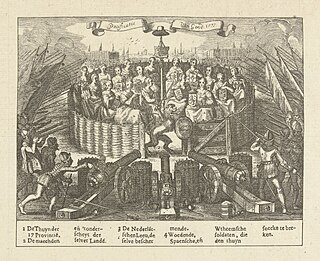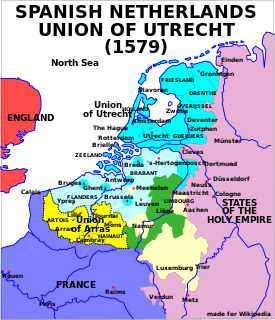 W
WThe Treaty of Athis-sur-Orge was a peace treaty signed on 23 June 1305 between King Philip IV of France and Robert III of Flanders. The treaty was signed at Athis-sur-Orge after the Battle of Mons-en-Pévèle and concluded the Franco-Flemish War (1297-1305).
 W
WThe Treaty of Arras was signed at Arras on 23 December 1482 by King Louis XI of France and Archduke Maximilian I of Habsburg as heir of the Burgundian Netherlands in the course of the Burgundian succession crisis.
 W
WThe Treaty of Campo Formio was signed on 17 October 1797 by Napoleon Bonaparte and Count Philipp von Cobenzl as representatives of the French Republic and the Austrian monarchy, respectively. The treaty followed the armistice of Leoben, which had been forced on the Habsburgs by Napoleon's victorious campaign in Italy. It ended the War of the First Coalition and left Great Britain fighting alone against revolutionary France.
 W
WThe Treaty of Delft, also called the Reconciliation of Delft, was signed on 3 July 1428 between Jacqueline of Bavaria and Philip the Good, Count of Flanders and Duke of Burgundy.
 W
WThe Pacification of Ghent was an alliance of the provinces of the Habsburg Netherlands, signed on November 8, 1576. The alliance was formed to drive Spanish mercenary troops out of the country and to promote a formal peace with the rebelling provinces of Holland and Zeeland.
 W
WThe Treaty of the Pyrenees was signed on 7 November 1659, and ended the 1635 to 1659 Franco-Spanish war.
 W
WThe Twelve Years' Truce was the name given to the cessation of hostilities between the Habsburg rulers of Spain and the Southern Netherlands and the Dutch Republic as agreed in Antwerp on 9 April 1609. It was a watershed in the Eighty Years' War, marking the point from which the independence of the United Provinces received formal recognition by outside powers. For Spain the Truce was seen as a humiliating defeat as they were forced to make several sacrifices but they scarcely got anything in return. For the time of its duration however the Truce allowed King Philip III and his favorite minister the Duke of Lerma to disengage from the conflict in the Low Countries and devote their energies to the internal problems of the Spanish Monarchy. The Archdukes Albert and Isabella used the years of the Truce to consolidate Habsburg rule and to implement the Counter-Reformation in the territories under their sovereignty.
 W
WThe Union of Utrecht was a treaty signed on 23 January 1579 in Utrecht, Netherlands, unifying the northern provinces of the Netherlands, until then under the control of Habsburg Spain.
 W
WThe Peace of Westphalia - is the collective name for two peace treaties signed in October 1648 in the Westphalian cities of Osnabrück and Münster. They ended the Thirty Years' War and brought peace to the Holy Roman Empire, closing a calamitous period of European history that killed approximately eight million people.